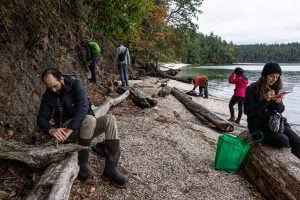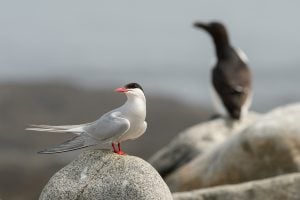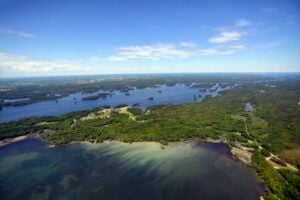Originally a 1600s sugar cane plantation, the residence fell into disuse following the abolition of slavery and the volcanic eruption. In the 1930s, a local family purchased the land, slowly restored it and has since opened its doors to the public.
The “Remarkable Garden” deserves its moniker, with a lush rain forest, gurgling river, and gorgeous hibiscus, heliconia, porcelain rose, banana blossoms, mango and jack fruit trees, vanilla plants and cilantro. The garden’s centrepiece is a 350-year-old zamana tree, also known as the “rain tree”, which survived the 1902 volcanic eruption. It won France’s “Tree of the Year” in 2016, and is the largest tree of the Lesser Antilles. You could stare at its huge branches for hours and marvel at the immense scale. I was delighted to spy a fuzzy blue tarantula on the bark, an endemic creature now protected on this island.
Julie Marraud des Grottes, the daughter of the Ceron’s owners, shows us the cocoa trees the family has re-introduced. She explains the process of turning beans into organic chocolate by harvesting, roasting and grinding down the cocoa. “I was born here, and I am living my dream life,” she says.
The superb farm-to-table restaurant is managed by her sister and Hugo Thierry, her sister’s spouse, a European-trained chef from France who uses herbs, chocolate, vanilla and edible flowers for his unique menu.
The wind whistles through the outdoor patio, and sweeping bamboo trees tower over us as we begin our “blind” tasting menu. The starter of avocado and raw tuna paired with nettle wrapped in a begonia leaf is delicious, but I would never have guessed the ingredients. The duck in bitter orange sauce is also tasty, as is the chocolate fondant. “We use the ingredients we have, and we give pleasure to the people through our food,” says Thierry.

















